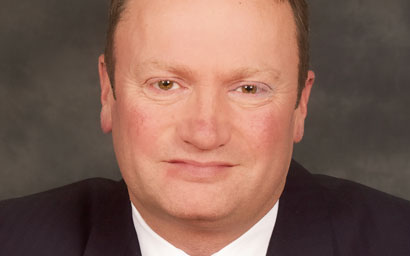Euan MacLaren of Natixis Global Asset Management talks to Nick Fitzpatrick about the hallmarks of active equity management – and explains how these pointers may be different for bonds.
Active managers need to stand up and fight their corner, says Euan MacLaren, head of UK/Ireland institutional business at Natixis Global Asset Management – the fund manager that is exploring the idea of including active share data on the factsheets of its Luxembourg equity funds, as we reported last month.
MacLaren is frustrated that within the active-versus-passive argument, any fund not classed as an index fund is shipped into active. The result is that index-huggers drag down the wider reputation of active managers.
He suggests that managers charging active fees with an active share above 80% should be considered as active, while others might be labelled index-pus.
Natixis GAM’s model is one of affiliate managers and he says equity funds around the group have an active share of 97%-98%, meaning the managers are “incredibly active”.
Natixis has outperformed by 300 to 500 basis points and charges between 50-60 basis points. MacLaren says Natixis GAM is “very happy” with this. Its global equity portfolio holds 40-50 stocks and is benchmark-agnostic. “Companies we look for are generally valued in the region of 60p in the pound, so we want a 30%-40% uplift to the intrinsic value we believe that company has,” he says.
Strong cash flows and an alignment of management interests with those of shareholders are some of the factors looked for.
Portfolios are high-conviction, focused and concentrated. These elements are usually hallmarks of active management, he says.
Running high-conviction equity portfolios should mean low turnover of stocks. Although not infallible, to that extent, turnover may be one measure of an active fund. But it is not the same for fixed income, MacLaren says.
Although investors do need to look at the number of fixed income holdings in a strategy and its diversification away from benchmark, studying how weightings do change gives an insight into the active level of a bond portfolio.
“The nature of fixed income and the opportunity to generate alpha requires a manager to be flexible so that they can quickly enter new areas of fixed income where opportunity is present.”
MacLaren says he believes local authority funds are becoming more active in fixed income in the hunt for yield. Without naming the authority, he says Natixis GAM was appointed by a council last December to invest in a range of fixed income – from sovereign bonds to loans – with an absolute-return objective. The money was sourced from a gilt portfolio.
He says a strategy like this is relevant in light of the likelihood of higher rates.
But Professor David Blake, the critic of active management at Cass Business School, points out that fund managers and other market participants are terrible at predicting rates.
MacLaren says: “Interest rate predictions should not be the only factor in running an active fixed income portfolio and managers need to be able to use fundamental and top-down analysis in conjunction with views on interest rates, as well as views about currency movements and what’s happening on the yield curve.”
He acknowledges that an element of rate prediction is used in multi-bond portfolios of the type Natixis GAM offers and says this is part of being an active fixed income manager.
“Yes, it is important for this to run alongside and a number of managers will hedge duration, which will be based upon their views on rates.”
All active managers will underperform at some point. But it is important for clients to remember the specific time horizon for the fund they are invested in.
MacLaren adds: “You have to look at why a manager underperforms. If the manager can explain it and it matches in with the process and philosophy you bought into, then you should feel comfortable.”
©2015 funds europe





